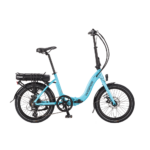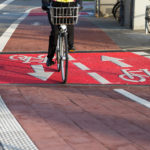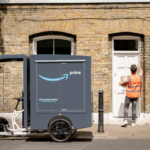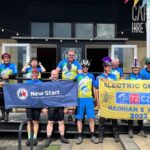Hello all,
another newbie for electrocution. Gathered a bunch of questions to ask, so I'd better get down to it, or it's going to take forever. It's going to be a long post, but I want it to be detailed so that the answers will have more chances of, well, actually addressing the questions. Things tend to go astray easily in a forum...
I live in Iraklion (Crete, Greece, y'know, kinda like Europe), which although smallish as a city, it seems to introduce random numbers of hills to my A to B commute, regardless of which actual locations points A and B stand for. Regardless. There's always a hill in between. Fed up!
So I want to electrify my bike. I considered the mid-drive, rear hub and front hub options and I seem to be leaning towards the front hub for a number of reasons. I know that it is probably the worst of options as far as performance and handling of the bike is concerned, but it's simple, easily reversible, improves weight distribution of an upright bike, it's internal gear hub compatible and, in my opinion, the most elegant solution.
What I require of my electrified bike:
- To still be a bicycle. This means a total weight < 20kg. I 'll build on a ~13kg bike so the whole kit should be on the order of 5-6 kg with a max of, say, 7kg.
- the motor should help me climb up hills and nothing more. I 'll still pedal on the hill, but I want it to feel more or less like a flat. And I always pedal on the flats (and lazily coast downhill).
- For my daily needs I can do with just a 10km range. This should hopefully bring down the capacity of the battery.
- No billion euro battery.
So, up to this moment I have come up with the following setup:
- a bafang 250W front hub motor from electrorad.de (Frank Scheftlein)
- electrorad controllers seem too pricey so I opt for the e-crazyman controller and thumb throttle
- custom machined torque arms.
My questions follow...
another newbie for electrocution. Gathered a bunch of questions to ask, so I'd better get down to it, or it's going to take forever. It's going to be a long post, but I want it to be detailed so that the answers will have more chances of, well, actually addressing the questions. Things tend to go astray easily in a forum...
I live in Iraklion (Crete, Greece, y'know, kinda like Europe), which although smallish as a city, it seems to introduce random numbers of hills to my A to B commute, regardless of which actual locations points A and B stand for. Regardless. There's always a hill in between. Fed up!
So I want to electrify my bike. I considered the mid-drive, rear hub and front hub options and I seem to be leaning towards the front hub for a number of reasons. I know that it is probably the worst of options as far as performance and handling of the bike is concerned, but it's simple, easily reversible, improves weight distribution of an upright bike, it's internal gear hub compatible and, in my opinion, the most elegant solution.
What I require of my electrified bike:
- To still be a bicycle. This means a total weight < 20kg. I 'll build on a ~13kg bike so the whole kit should be on the order of 5-6 kg with a max of, say, 7kg.
- the motor should help me climb up hills and nothing more. I 'll still pedal on the hill, but I want it to feel more or less like a flat. And I always pedal on the flats (and lazily coast downhill).
- For my daily needs I can do with just a 10km range. This should hopefully bring down the capacity of the battery.
- No billion euro battery.
So, up to this moment I have come up with the following setup:
- a bafang 250W front hub motor from electrorad.de (Frank Scheftlein)
- electrorad controllers seem too pricey so I opt for the e-crazyman controller and thumb throttle
- custom machined torque arms.
My questions follow...






